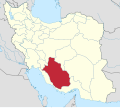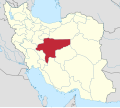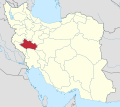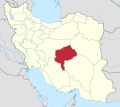List
- Legend
Reformist (7)
Principlist (4)
Military(0)
Independent (20)
| Iran governors-general | ||||||||||
|---|---|---|---|---|---|---|---|---|---|---|
| Province | image | Governor | Party | Prior public experience | Inauguration | |||||
 |  | Mojtaba Abdollahi | Principlist | Executive Director | November 7, 2021 | |||||
 |  | Masoud Emami Yeganeh | Independent | Executive Director | November 17, 2024 | |||||
 |  | Bahram Sarmast | Reformist | Executive Director | September 29, 2024 | |||||
 |  | Reza Rahmani | Independent | Executive Director and MP of Iran | December 4, 2024 | |||||
 |  | Arsalan Zare | Independent | Executive Director | November 3, 2024 | |||||
 | Jafar Mardani | Independent | Executive Director | November 6, 2024 | ||||||
 |  | Hossein-Ali Amiri | Independent | Executive Director | October 9, 2024 | |||||
 |  | Hadi Haghshenas | Reformist | Executive Director and MP of Iran | October 2, 2024 | |||||
 | Ali-Asghar Tahmasbi | Independent | Executive Director | November 17, 2024 | ||||||
 | Hamid Mollanouri Shamsi | Independent | Executive Director | September 29, 2024 | ||||||
 | Mohammad Ashouri Taziani | Independent | Executive Director | December 1, 2024 | ||||||
 | Ahmad Karami | Independent | Executive Director | November 6, 2024 | ||||||
 |  | Mehdi Jamalinejad | Principlist | Executive Director | October 15, 2024 | |||||
 |  | Mohammad Ali Talebi | Independent | Executive Director | November 10, 2024 | |||||
 | Manouchehr Habibi | Independent | Executive Director | November 27, 2024 | ||||||
 | Bahman Nouri | Independent | Executive Director | October 27, 2024 | ||||||
 |  | Gholam Hossein Mozaffari | Reformist | Executive Director and MP of Iran | October 9, 2024 | |||||
 | Mohammad-Reza Hashemi | Principlist | Executive Director | November 20, 2024 | ||||||
 | Mohammad-Reza Mavalizadeh | Independent | Executive Director and MP of Iran | October 20, 2024 | ||||||
 | Yadollah Rahmani | Reformist | Executive Director | September 18, 2024 | ||||||
 | Arash Zarehtan Lahoni | Reformist | Executive Director and MP of Iran | September 18, 2024 | ||||||
 |  | Saeed Shahrokhi | Reformist | Executive Director | October 20, 2024 | |||||
 | Mahdi Zandiyeh Vakili | Independent | Executive Director | November 3, 2024 | ||||||
 | Mahdi Younesi Rostami | Independent | Executive Director | November 24, 2024 | ||||||
 | Mohammad Nozari | Reformist | Executive Director | November 24, 2024 | ||||||
 |  | Akbar Behnamjoo | Independent | Executive Director | October 20, 2024 | |||||
 |  | Mohammad Javad Kolivand | Independent | Executive Director and MP of Iran | November 24, 2024 | |||||
 | Mansour Bijar | Independent | Executive Director | October 30, 2024 | ||||||
 |  | Mohammad-Sadegh Motamedian | Independent | Executive Director | October 20, 2024 | |||||
 | Mohammad-Reza Babaei | Principlist | Executive Director | October 9, 2024 | ||||||
 | Mohsen Sadeghi | Independent | Executive Director | November 20, 2024 | ||||||